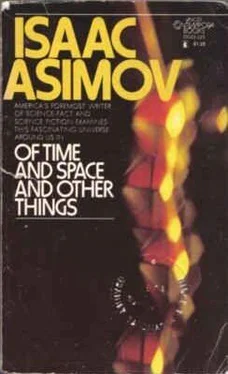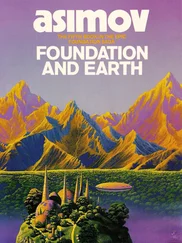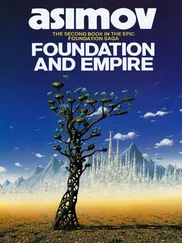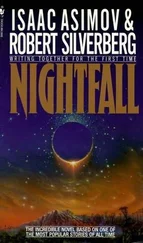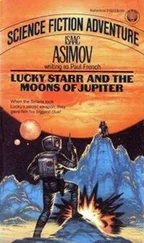Isaac Asimov - Of Time and Space and Other Things
Здесь есть возможность читать онлайн «Isaac Asimov - Of Time and Space and Other Things» весь текст электронной книги совершенно бесплатно (целиком полную версию без сокращений). В некоторых случаях можно слушать аудио, скачать через торрент в формате fb2 и присутствует краткое содержание. Год выпуска: 1972, ISBN: 1972, Издательство: Lancer Books, Жанр: Прочая научная литература, на английском языке. Описание произведения, (предисловие) а так же отзывы посетителей доступны на портале библиотеки ЛибКат.
- Название:Of Time and Space and Other Things
- Автор:
- Издательство:Lancer Books
- Жанр:
- Год:1972
- ISBN:ISBN: 0-447-33023-3
- Рейтинг книги:4 / 5. Голосов: 1
-
Избранное:Добавить в избранное
- Отзывы:
-
Ваша оценка:
- 80
- 1
- 2
- 3
- 4
- 5
Of Time and Space and Other Things: краткое содержание, описание и аннотация
Предлагаем к чтению аннотацию, описание, краткое содержание или предисловие (зависит от того, что написал сам автор книги «Of Time and Space and Other Things»). Если вы не нашли необходимую информацию о книге — напишите в комментариях, мы постараемся отыскать её.
Of Time and Space and Other Things — читать онлайн бесплатно полную книгу (весь текст) целиком
Ниже представлен текст книги, разбитый по страницам. Система сохранения места последней прочитанной страницы, позволяет с удобством читать онлайн бесплатно книгу «Of Time and Space and Other Things», без необходимости каждый раз заново искать на чём Вы остановились. Поставьте закладку, и сможете в любой момент перейти на страницу, на которой закончили чтение.
Интервал:
Закладка:
From Equation 1, we can say that the force of attraction between a satellite and its primary would be:
fp = gmmp (Equation 2) while that between the same satellite and the Sun would be: gmm f,, = ds2 (Equation 3)
What we are interested in is how the gravitational force between satellite and primary compares with that between satellite and Sun. In other words we want the ratio which we can call the "tug-of-war value." To get that we must divide equation 2 by equation 3. The result of such a division would be: fl,/f. = (M,/M.) (d./d,) 2 (Equation 4)
In making the division, a number of simplications have taken place. For one thing the gravitational constant has dropped out, which means we won't have to bother with an inconveniently small number and some inconvenient units. For another, the mass of the satellite has dropped out. (In other words, in obtaining the tug-of-war value, it doesn't matter how big or little a particular satellite is.
The result would be the same in any case.)
What we need for the tug-of-war value is the ratio of the mass of the planet to that of the sun (mlm,,) and the square of the ratio of the distance from satellite to Sun to the distance from satellite to primary (dld,)2.
There are only six planets that have satellites and these, in order of decreasing distance from the Sun, -are: Nep tune, Uranus, Saturn, Jupiter, Mars, and Earth. (I place Earth at the end, instead of at the beginning, as natural chauvinism would dictate, for my own reasons. YouR find out.)
For these, we will first calculate the mass-ratio and the results turn out as follows:
Neptune 0.000052
Uranus 0.000044
Saturn 0.00028
Jupiter 0.00095
Mars 0.00000033
Earth 0.0000030
As you see, the mass ratio is really heavily in favor of the Sun. Even Jupiter, which is by far the most massive planet, is not quite one-thousandth as massive as the Sun.
In fact, all the planets together (plus satellites, planetoids, comets, and meteoric matter) make up, no more than 1/750 of the mass of the Sun.
So far, then, the tug of war is all on the side of the Sun.
However, we must next get the distance ratio, and that favors the planet heavily, for each satellite is, of course, far closer to its primary than it is to the Sun. And what's more, this favorable (for the planet) ratio must be squared, making it even more favorable, so that in the end we can be reasonably sure that the Sun will lose out in the tug of war. But we'll check, anyway.
Let's take Neptune first. It has two satellites, Triton and Nereid. The average distance of each of these from the Sun is, of necessity, precisely the same as the average dis tance of Neptune from the Sun, which is 2,797,000,000 miles. The average distance of Triton from Neptune is, however only 220,000 miles, while the average distance of Nerei@ from Neptune is 3,460,000 miles.
If we divide the distance from the Sun by the distance frbm Neptune for each satellite and square the result we get 162,000,000 for Triton and 655,000 for Nereid. We multiply each of these figures by the mass-ratio of Neptune to the Sun, and that gives us the tug-of-war value, which is:
Triton 8400
Nereid 34
The conditions differ markedly for the two satellites.
The gravitational influence of Neptune on its nearer satel lite, Triton, is overwhelmingly greater than the influence of the Sun on the same satellite. Triton is @y in Nep tune's grip. The outer satellite, Nereid, however, is at tracted by Neptune considerably, but not overwhelmingly, more strongly than by the Sun. Furthermore, Nereid has a highly eccentric orbit, the most eccentric of any satellite in the system. It approaches to within 800,000 miles of Neptune at one end of its orbit and recedes to as far as 6 million miles at the other end. When most distant from Neptune, Nereid experiences a tug-of-war value as low as For a variety of reasons (the eccentricity of Nereid's orbit, for one thing) astronomers generally suppose that Nereid is not a true satellite of Neptune, but a planetoid captured by Neptm on the occasion of a too-close ap, proach.
Neptune's weak hold on Nereid certainly seems to sup port this. In fact, from the long astronomic view, the asso ciation between Neptune and Nereid may be a temporary one. Perhaps the disturbing effect of the solar pull will eventually snatch it out of Neptune's grip. Triton, on the other hand, will never leave Neptune's company short of some catastrophe on tL System-wide scale.
There's no point in going through all the details of the calculations for all the satellites. I'll do the work on my own and feed you the results. Uranus, for instance, has five known satellites, all revolving in the plane of Uranus's equator and all considered true satellites by astronomers.
Reading outward from the planet, they are: Miranda, Ariel, UmbrieL Titania, and Oberon.
The tug-of-war values for these satellites are:
Miranda 24,600
Ariel 9850
Umbriel 4750
Titania 1750
Oberon 1050
All are safely and overwhelming in Uranus's grip, and the high of-war values fit Vith their status as true satellites.
We pass on, then, to Saturn, which has nine satellites:
Mimas, Enceladus, Tethys, Dione, Rhea, Titan, Hyperion, ,Iapetus, and Phoebe. Of these, the eight innermost revolve in the plane of Satum's equator and are considered true satellites. Phoebe, the ninth, has a highly inclined orbit and is considered a captured planetoid.
The tug-of-war values for these satellites are:
Mimas 1 15,500
Enceladus 9800
Tethys 6400
Dione 4150
Rhea 2000
Titan 380
Hyperion 260
Iapetus 45
Phoebe 31/2
Note the low value for Phoebe.
Jupiter has twelve satellites and I'll take them in two installments. The first five: Amaltheia, lo, Europa, Gany mede, and Callisto all revolve in the plane of Jupiter's equator and all are considered true satellites. The tug-o amp; war values for these are:
Amaltheia 18,200 lo 3260
Europa 1260
Ganymede 490
Callisto 160 and all are clearly in Jupiter's grip.
Jupiter, however, has seven more satellites which have no official names (see Chapter 5), and which are com monly known by Roman numerals (from VI to XII) given in the order of their discovery. In order of distance from Jupiter, they are VI 'X, VII, XII, XI, VIII, and IX. All are small and with orbits that are eccentric and highly inclined to the plane of Jupitet's equator. Astronomers consider them captured planetoids. (Jupiter is far more massive than the other planets and is nearer the planetoid belt, so it is not surprising that it would capture seven planetoids.)
The tug-of-war results for these seven certainly bear out the captured planetoid notion, for the values are:
VI 4.4 x 4.3 vii 4.2 xii 1.3 xi 1.2
Vill 1.03 ix 1.03
Jupitees grip on these outer satellites is feeble indeed.
Mars has two satellites, Phobos and Deimos, each tiny and very close to Mars. They rotate in the plane of Mars's equator, and are considered true satellites. The tug-of-war values are:
Phobos 195
Deimos 32
So far I have fisted 30 satellites, of which 21 are con sidered true satellites and 9 are usually tabbed as (prob ably) captured planetoids. I would like, for the moment, to leave out of consideration the 31st satellite, which hap pens to be our own Moon (I'll get back to it, I promise) and summarize the 30 as follows:
Number of Satellites Planet true captured
Neptune I I
Uranus 5 0
Saturn 8 1
Jupiter 5 7
Mars 2 0
It is unlikely that any additional true satellites will be discovered (though, to be sure, Miranda was discovered as recently as 1948). However, any number of tiny bodies coming under the classification of captured planetoids may yet tum up, particularly once we go out there and actually look.
Читать дальшеИнтервал:
Закладка:
Похожие книги на «Of Time and Space and Other Things»
Представляем Вашему вниманию похожие книги на «Of Time and Space and Other Things» списком для выбора. Мы отобрали схожую по названию и смыслу литературу в надежде предоставить читателям больше вариантов отыскать новые, интересные, ещё непрочитанные произведения.
Обсуждение, отзывы о книге «Of Time and Space and Other Things» и просто собственные мнения читателей. Оставьте ваши комментарии, напишите, что Вы думаете о произведении, его смысле или главных героях. Укажите что конкретно понравилось, а что нет, и почему Вы так считаете.
